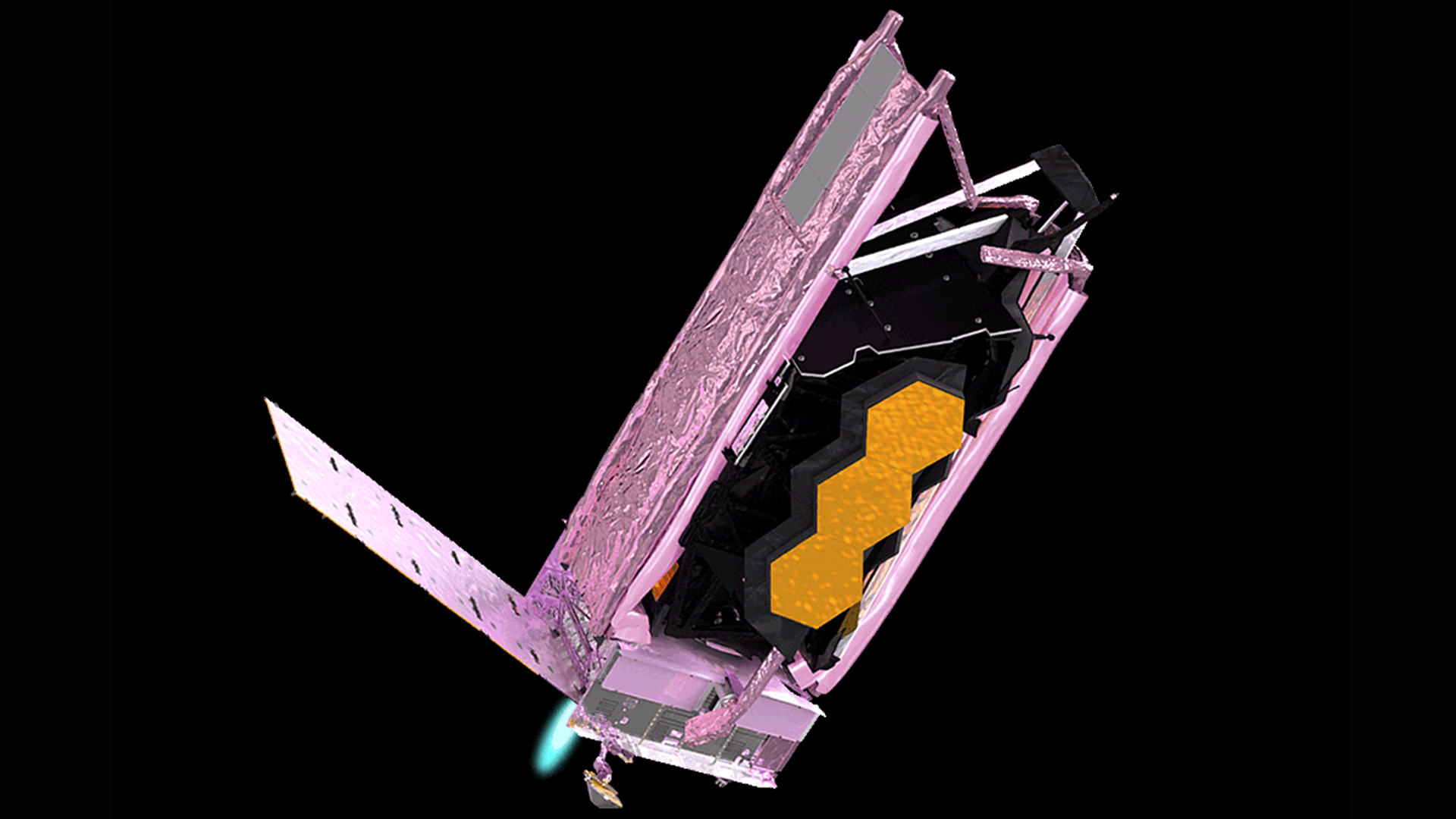James Webb Space Telescope sails beyond the orbit of the moon after 2nd course correction
Just one more burn — and a few major deployments — to go.

NASA's next-generation space observatory has sailed beyond the orbit of the moon after nailing the second of three required course-correction burns, agency officials said Monday.
The long-awaited James Webb Space Telescope launched on Saturday (Dec. 25), beginning a one-month deployment process. Over the course of that deployment, the observatory must execute three burns to adjust its trajectory, the first of which began 12.5 hours after launch and lasted 65 minutes; the second, much shorter burn, is now also complete.
"At 7:20 pm EST — 60 hours after liftoff — Webb's second mid-course correction burn began," NASA officials wrote in a statement released on Monday (Dec. 27). "It lasted 9 minutes and 27 seconds and is now complete."
Live updates: NASA's James Webb Space Telescope mission
In photos: The Christmas launch of NASA's James Webb Space Telescope
The spacecraft has also crossed the moon's orbit of Earth, according to a mission tweet. As of Tuesday, Webb was more than 293,000 miles (471,000 kilometers) from Earth. The average distance from Earth to the moon is about 240,000 miles (384,000 km).
"It's been a busy evening! Not only did we just complete our second burn, but #NASAWebb also passed the altitude of the Moon as it keeps cruising on to the second Lagrange point to #UnfoldTheUniverse," Webb mission officials wrote. "Bye, @NASAMoon!"
("Bye, moon," is not literal here; the moon was elsewhere in its orbit and there was no close flyby. In fact, according to astronomer Jonathan McDowell, the observatory was closest to the moon while on the launch pad, since the spacecraft launched in the opposite direction.)
Get the Space.com Newsletter
Breaking space news, the latest updates on rocket launches, skywatching events and more!
The spacecraft will execute its third and final course-correction burn about 29 days after launch, according to a NASA deployment timeline. This burn will be the mission's orbital insertion burn, establishing the spacecraft in a halo orbit around a point in space known as L2, or Earth-sun Lagrange point 2.
This location is nearly 1 million miles (1.5 million kilometers) away from Earth on the side opposite the sun. The remote location will help Webb detect infrared light precisely with minimal interference from the sun.
For now, however, the focus turns to the observatory's massive sunshield, which was carefully folded up for launch. Now, the spacecraft must unfold the shield, which stretches as long as a tennis court, and separate its five ultrathin layers. The sunshield, like Webb's location, is integral to the mission's goal of observing infrared light.
Sunshield deployment is tentatively scheduled to begin on Tuesday (Dec. 28), three days after launch, although each stage of deployment is controlled by personnel on the ground and the timeline is flexible.
First, Webb must deploy the sunshield's pallet and tower, then release a flap and the sunshield covers. That sequence of events is estimated to take about two days. Then, the sunshield's booms will deploy, unveiling the sunshield at its full width. By eight days after launch, the mission team hopes that the sunshield will be fully deployed.
Editor's note: This article has been updated to include the correct distance between the Earth and the moon. Email Meghan Bartels at mbartels@space.com or follow her on Twitter @meghanbartels. Follow us on Twitter @Spacedotcom and on Facebook.
Join our Space Forums to keep talking space on the latest missions, night sky and more! And if you have a news tip, correction or comment, let us know at: community@space.com.

Meghan is a senior writer at Space.com and has more than five years' experience as a science journalist based in New York City. She joined Space.com in July 2018, with previous writing published in outlets including Newsweek and Audubon. Meghan earned an MA in science journalism from New York University and a BA in classics from Georgetown University, and in her free time she enjoys reading and visiting museums. Follow her on Twitter at @meghanbartels.









